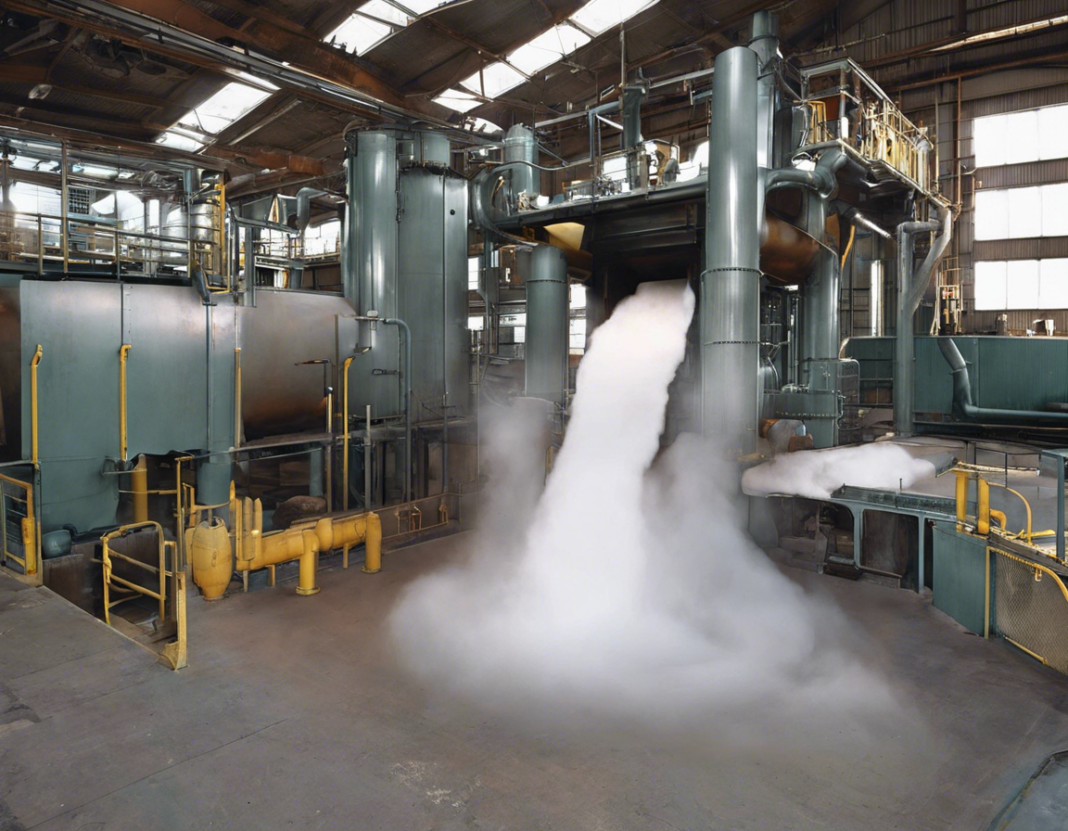When it comes to extracting metals from their ores, the chemical process of extraction from oxides plays a crucial role in various industries such as mining, manufacturing, and metallurgy. Oxides are one of the most common forms in which metals exist in nature, and extracting them involves several steps of chemical reactions and processes to obtain the desired pure metal. In this article, we will delve into the chemical process of extracting metals from oxides, exploring the methods, principles, and applications of this important industrial process.
Understanding Metal Extraction from Oxides
What are Metal Oxides?
Metal oxides are compounds composed of a metal element bonded with oxygen. Examples of metal oxides include iron oxide (Fe2O3), aluminum oxide (Al2O3), and copper oxide (CuO). These oxides are typically found in nature as ores and need to be extracted and processed to obtain pure metals for various applications.
Importance of Metal Extraction
Metals are essential raw materials used in numerous industries, including construction, electronics, transportation, and energy production. Extracting metals from their ores allows us to obtain the pure metal needed for manufacturing products that are integral to our daily lives.
Key Steps in Metal Extraction from Oxides
The extraction of metals from oxides involves several crucial steps, including:
1. Ore Crushing and Grinding: The first step in the extraction process is to crush the ore into smaller pieces and grind it into a fine powder to increase its surface area for chemical reactions.
2. Roasting or Calcination: In this step, the crushed ore is heated in the presence of air to convert metal oxides into their respective metal oxides.
3. Reduction of Metal Oxides: The metal oxides obtained from roasting are then reduced to obtain pure metals. This is usually done through chemical reactions using reducing agents such as carbon, hydrogen, or electrolysis.
Methods of Metal Extraction from Oxides
Pyrometallurgical Process
Pyrometallurgy is a traditional method of extracting metals from their ores using high temperatures. This process involves smelting the ore in a furnace to separate the metal from the impurities. Pyrometallurgical processes are commonly used for metals like copper, lead, and iron.
Hydrometallurgical Process
Hydrometallurgy involves using aqueous solutions to extract metals from their ores. This process is often used for metals that are more reactive and difficult to extract using pyrometallurgical methods. Leaching is a common hydrometallurgical technique where the ore is treated with a suitable solvent to dissolve the metal and then recover it through precipitation or other methods.
Electrometallurgical Process
Electrometallurgy utilizes electrical energy to extract metals from their ores. This process is commonly used for metals like aluminum and magnesium. Electrolysis is a key electrometallurgical method where an electric current is passed through an electrolyte to deposit the metal on the cathode.
Applications of Metal Extraction from Oxides
Iron Extraction
Iron is one of the most abundant metals on Earth and is primarily extracted from iron oxides such as hematite (Fe2O3) and magnetite (Fe3O4). The extraction of iron from its oxides is essential for the production of steel, which is used in construction, infrastructure, and manufacturing.
Aluminum Extraction
Aluminum is extracted from its oxide, bauxite (Al2O3), through the Bayer process, which involves leaching the ore with sodium hydroxide to obtain alumina, followed by the Hall-Héroult process for electrolytic reduction to produce pure aluminum. Aluminum extraction from oxides is crucial for industries like aerospace, automotive, and packaging.
Copper Extraction
Copper oxide ores, such as cuprite (Cu2O) and tenorite (CuO), are commonly extracted using hydrometallurgical methods like solvent extraction and electrowinning. Copper extraction from oxides is vital for the production of electrical wires, plumbing, and electronics.
Advantages and Challenges of Metal Extraction from Oxides
Advantages
- Allows for the production of pure metals for various industries.
- Utilizes different techniques like pyrometallurgy, hydrometallurgy, and electrometallurgy for extraction.
- Enables the recycling of metals from oxide-containing scrap materials.
Challenges
- Energy-intensive processes, especially in pyrometallurgy and electrometallurgy.
- Environmental impact due to emissions and waste generated during extraction.
- Cost considerations for implementing efficient extraction processes.
Frequently Asked Questions (FAQs)
1. What are some common metal oxides used in industrial processes?
Common metal oxides include iron oxide (Fe2O3), aluminum oxide (Al2O3), copper oxide (CuO), zinc oxide (ZnO), and lead oxide (PbO).
2. How is the choice of extraction method determined for a particular metal oxide?
The choice of extraction method depends on factors such as the reactivity of the metal, the composition of the ore, energy requirements, and environmental considerations.
3. What is the role of a reducing agent in metal extraction from oxides?
A reducing agent is used to convert metal oxides into pure metals by donating electrons and reducing the metal ions to their elemental form.
4. Can metal extraction from oxides be done on a small scale?
Yes, metal extraction processes can be scaled based on the desired output, from small-scale artisanal methods to large industrial operations.
5. How important is recycling in metal extraction and sustainability?
Recycling plays a crucial role in reducing the demand for new metal extraction, conserving resources, and minimizing environmental impact. Many industries actively recycle metals from oxide-containing materials to promote sustainability.
In conclusion, the chemical process of extracting metals from oxides is a fundamental aspect of metallurgy and industrial manufacturing. Understanding the methods, applications, advantages, and challenges of metal extraction from oxides is essential for efficient production, sustainable practices, and technological advancements in various sectors that rely on metals for their operations.

